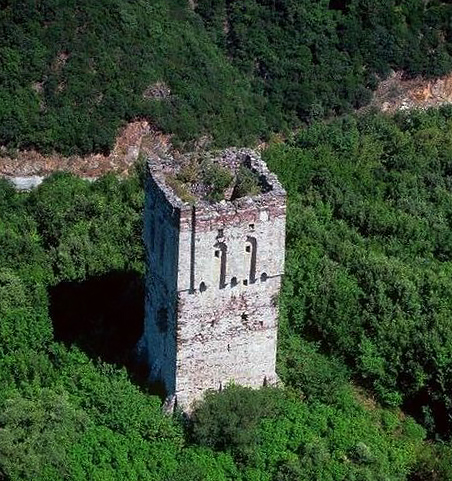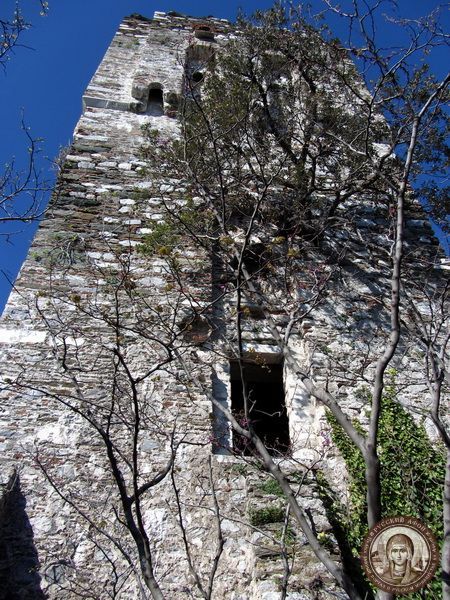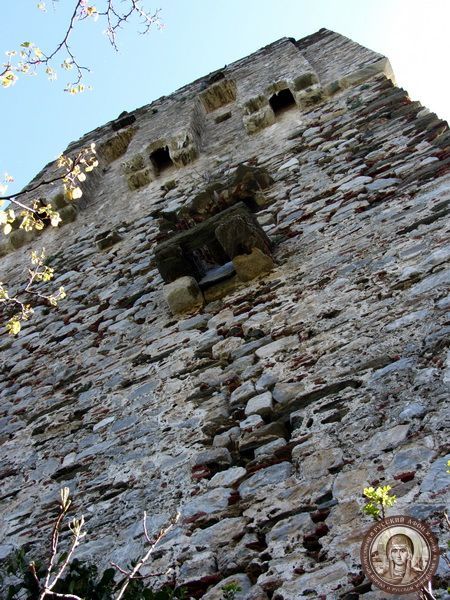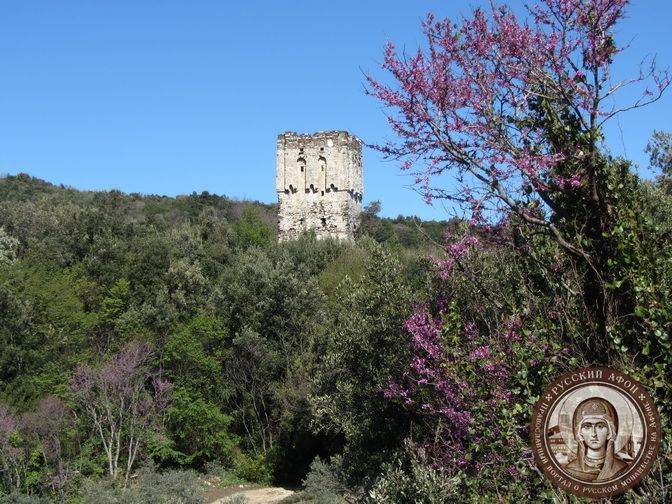
Each Orthodox person has heard about the Holy Mount Athos and about its famous monasteries, which never cease to bring the fruits of holiness to God. The admirers of Mount Athos will surely be able to name all the monasteries of the monastic republic, tell their history, and list the names of their most famous saints. However, few people have heard about the fact that next to the monks from Vatopedi and Karakalou, Dochiariou and Zografou, Simonos Petra and the Great Lavra there were monks from the Italian town of Amalfi, who used to serve the Lord side by side for several centuries, celebrating their mass according to the Western Roman rite and preserving the charter and covenants of St. Benedict of Nursia, the founder of their glorious order. What was this monastery, when did it appear, what place did it occupy in the life of Athos and when did it disappear?

Appearance on Athos. The help of Georgian monks. Let us remind you that Saint Benedict of Nursia (†547) was an Italian saint of the Roman Church who lived 5 centuries before the tragic Schism. He founded the famous monastery in Monte Cassino, for which he wrote a special charter based on the rules of St. Pachomius the Great and St. Basil the Great, which later became the basis for the Order of the Benedictines and the entire Western monastic community. The charter of the Benedictines is notable for its combination of prayer and physical and intellectual work, which was expressed in the motto of the Order ora et labora (pray and labor).
According to some researchers (H.A. Keller, G.T. Madzharashvili), the first Benedictine monks from Italy appeared on Mount Athos very early and, according to the surviving hagiographies, were personally acquainted with the founder of the Great Lavra, St. Athanasius of Athos, whom they highly esteemed. The Benedictines came from Amalfi, an Italian port town south of Naples. The Amalfitans were attracted by the spirit of Eastern monasticism, which was then nascent on Mount Athos. According to St. George of Athos, the abbot of the Georgian Iveron Monastery and the compiler of the lives of St. John and St. Euthymius, the Georgian monks of the Holy Mountain sheltered the great Roman elder Leo and his followers in their monastery, and then helped them to establish their own monastery. That was how the Benedictine monastery in honor of the Blessed Virgin Mary, also known as the Roman monastery or the Amalfion (also known by its Hellenistic name, Morphenou) was founded. The monastery is commonly dated back to the years 985-990. George of Athos claims that the Benedictine ascetics came to Athos “while Father John was still alive”, that is, before 1005.

Caviar for Saint Athanasius. The existence of the Benedictines on the Holy Mountain is confirmed by the very life of St. Athanasius of Athos, which tells of the friendship of the founder of the Athonite monasticism with guests from Italy. The latter were constantly visiting St. Athanasius to receive guidance. The life recounts how the Benedictines of Athos once brought St. Athanasius a jug of caviar, which he did not accept but it had no effect on the good and friendly relations between the Eastern monk and the Westerners. There were two Benedictines, John and Arsenios, at St. Athanasius’ Lavra. Some time later, the Benedictines erected their monastery in the immediate vicinity of the Great Lavra.

Mention of Amalfion in a Benedictine chronicle. The Chronicle of the famous historian Leo, bishop of Ostia, who wrote the chronicle of the Abbey of Monte Cassino, contains some facts that echo the lives of St. John and St. Euthymius. The chronicle tells us that there was an unrest in Monte Cassino in 986 because its 284th abbot was elected not by the monks, as required by the Statute of St. Benedict, but by a influential local count. Some ascetics left the abbey, and one of the groups went to Jerusalem, and then to the Sinai monastery. Six years later, this group of monks led by John Benevento went to Greece, to the mountain called Agion Oros, where they lived in the Abbey of Amalfi. Then John had a vision: St. Benedict ordered him to return to Monte Cassino and become a new abbot, which happened in 997.
Was it a Catholic or an Orthodox monastery? Based on the fact that the monastery was founded by some Italian Benedictines, a few researchers assumed that Amalfion was a Catholic monastery (Academician E. Metreveli) but this assumption is erroneous, which is already well proven by Russian Byzantologists. Despite the Schism of 1054 and the mutual antagonism between the Western and Eastern Churches, the Benedictine abbey developed and flourished, which meant that it was Orthodox, otherwise it would have been closed, and the monks would have been expelled or at least accused of heresy, as it happened in 808 with Frankish monks on the Mount of Olives for singing the Creed with the filioque. A number of Latin abbeys were closed in Constantinople in 1052, and in 1186 the Latins were expelled from the Second Rome altogether. However, this wasn’t the case with Amalfion.

The Emperors’ Patronage. The Amalfi Monastery was patronized by the Byzantine emperors. Amalfi was mentioned in 1081 as an imperial monastery [H.A. Keller. Amalfion (Western Rite Monastery of Mt. Athos)], and in 1118 and 1143 Emperor John II Comnenus granted some land to the Benedictine monastery on Athos. The Benedictine abbey was a full member of the Athos monastic community and even enjoyed special privileges. The signature of the Amalfi abbot came immediately after the signature of the abbot of the Great Lavra, which indicates the high status of Amalfion.
Disappearance of the Monastery. The signature of the Amalfi abbot is still present in the Athos documents in 1169. Later, however, any mention of him is lost in history. Some researchers cite the year 1287 as the date of destruction or devastation of the monastery (Marco Merlini). Apparently, the unique Orthodox Benedictine monastery was destroyed by the Crusaders, but the definitive answer is still waiting for its historian.
The existence of a Western monastery that had slightly different rules and conducted divine services according to the tradition of the ancient Roman Church on the Holy Mount Athos along with the Eastern monasteries reiterates the universality of Orthodoxy. It is a remarkable fact that there are a number of monasteries in the Orthodox Church that still operate according to the Charter of St. Benedict, including, for example, the famous stauropegic monastery of the ROCOR in honor of Christ the Savior (Christminster) in New York, USA, and several other communities. God sent His Son to destroy the enmity not only between heaven and earth, but also to unite the most diverse nations and cultures in the Church, under Jesus Christ as its sole head. The Holy Mountain is a living testimony of the unity for which the Lord prayed before His Passion.
Photos from: http://monasterium.by/fakti/amalfion-tayny-i-zagadki-benediktinskogo-monastyrya-na-afone/




I wonder if the Amalfion monastery will ever be restored? It would be lovely to see, especially for those of us Orthodox who are oblates of St. Benedict!
Thank you for this lovely article. Benedictine monasticism does, indeed, remain alive in Holy Orthodoxy! There are two canonically recognized monasteries at the present time: Assumption Abbey, Eisbergen, Germany (ROCOR); and the Monastery of Our Lady and St. Laurence, Colorado, USA (Antiochian). Both serve the Divine Services according to the ancient Rite of St. Gregory the Great (Liturgy) and the Rule of St. Benedict (the Hours).
Thank you for this additional imformation! God bless!
I am so glad to see this article being diseminated. Thank you!
Abbot Theodore
Benedictine Monastery of Our Lady and Saint Laurence
Antiochian Orthodox Archdiocese of North America